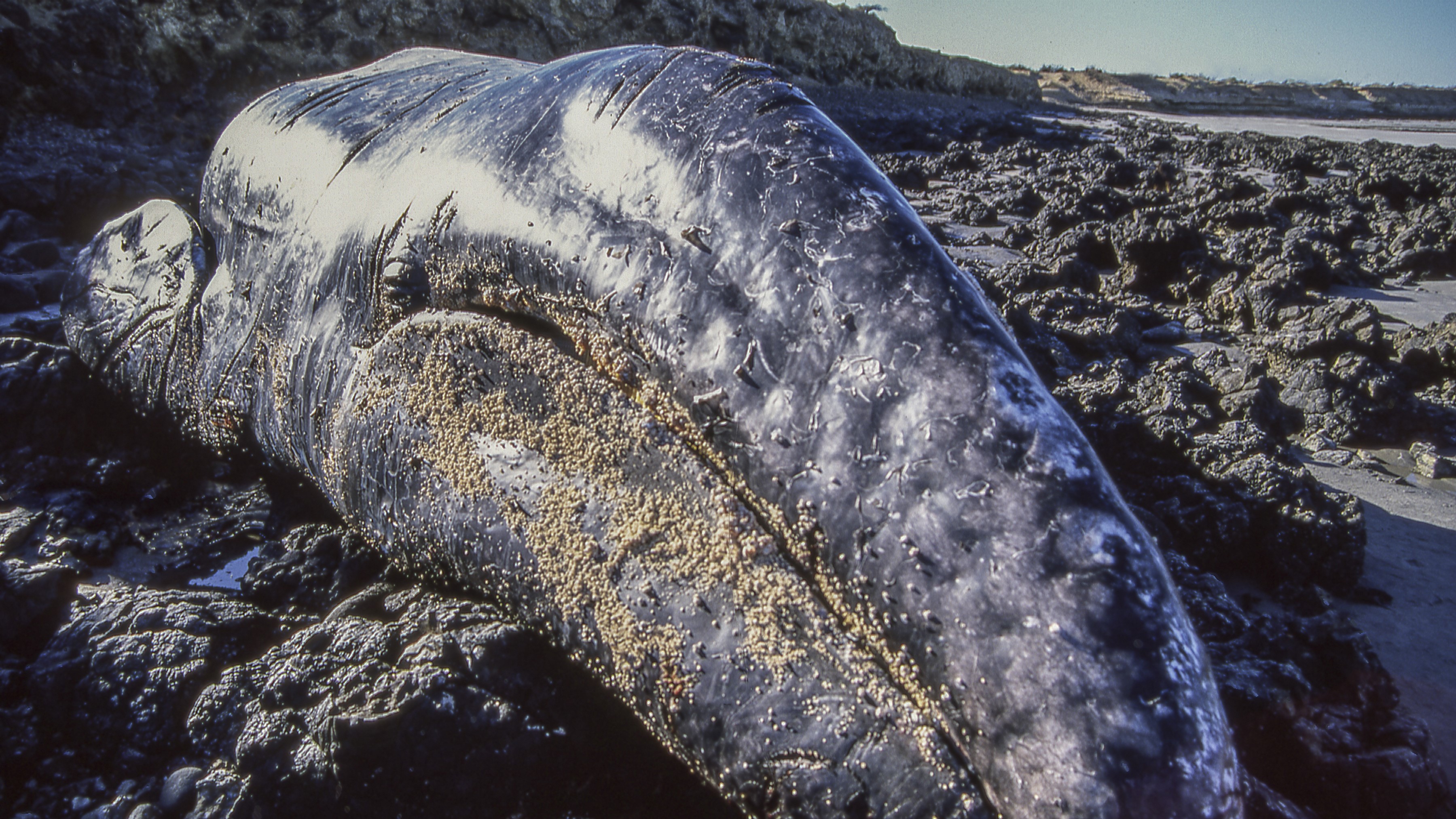Scientists finally figure out why hundreds of gray whales keep washing up dead along US coasts
Three mass mortality events have struck a population of gray whales off the west coast of North America since the 1980s, and scientists have linked them to changing conditions in the Arctic.

A strange series of mass deaths among gray whales in the northeastern Pacific Ocean may finally have an explanation, with scientists linking Arctic sea ice levels to the major die-off events.
Three mortality events have struck gray whales (Eschrichtius robustus) living off the coast of North America since the 1980s, reducing the population by 15% to 25% each time, according to a new study. In total, more than 2,000 gray whales are known to have died. The first mass die-off took place between 1987 and 1989 and was the largest in magnitude, killing at least 700 whales. Reporting structures and survey efforts only expanded in the 1990s, however, meaning the number of strandings associated with this mortality event could be an underestimate, according to the study. The second took place between 1999 and 2000, killing 651 whales.
The latest die-off began in 2019 and saw more than 70 gray whales wash up dead in just six months. It is ongoing and — as of Sept. 26, 2023 — a total of 688 whales have died. What caused each of the events was unclear.
"These are extreme population swings that we did not expect to see in a large, long-lived species like gray whales," study lead author Joshua Stewart, an assistant professor at Oregon State University's Marine Mammal Institute, said in a statement.
Related: Could an impending rise in solar storms cause more whales to strand?
Commercial whaling until the mid-20th century drove the population of North Pacific gray whales to near-extinction, but it has since bounced back and currently numbers around 14,500 individuals, according to the statement. Scientists previously thought this successful recovery meant the whales were dying off periodically as their numbers exceeded what their habitat and prey could provide for.
But changing conditions and fluctuating sea ice levels in the Arctic may better explain what the National Oceanic and Atmospheric Administration (NOAA) termed "unusual mortality events," according to the new study, published Oct. 12 in the journal Science.
Get the world’s most fascinating discoveries delivered straight to your inbox.
Sea ice cover and the amount of food available for gray whales may dictate how the population fares. Higher-than-usual ice cover in some years may block passage to the Bering and Chukchi seas, where the whales spend the summer months feasting on fatty crustaceans before migrating southward again. "When the availability of their prey in the Arctic is low and the whales cannot reach their feeding areas because of sea ice, the gray whale population experiences rapid and major shocks," Stewart said.
Gray whales quickly rebounded from the first two mortality events. But the most recent die-off is ongoing since 2019 and has cast us into "uncharted territory," Stewart said.
Unlike the two previous events, a historic loss of Arctic sea ice could be to blame for the latest gray whale die-off. That's because sea ice hosts a carpet of algae on its underside, which decays and showers the seabed with food for bottom-dwellers, including the whales' preferred crustaceans.
"With less ice, you get less algae, which is worse for the gray whale prey," Stewart said. Melting sea ice also frees up passage for strong currents that sweep away the sediment and leaves bottom-dwelling crustaceans and other creatures homeless. "All of these factors are converging to reduce the quality and availability of the food [gray whales] rely on," he said.
Climate change might be the reason this mortality event is dragging on for longer than the previous two, Stewart said. "What we're seeing is much more of a bumpy ride in response to highly variable and rapidly changing ocean conditions," he said.
While climate change could mean there is less food for gray whales, it probably won't put the northeastern Pacific population at risk of extinction, Stewart said. But "an Arctic Ocean that has warmed significantly may not be able to support 25,000 gray whales like it has in the recent past," he added.

Sascha is a U.K.-based staff writer at Live Science. She holds a bachelor’s degree in biology from the University of Southampton in England and a master’s degree in science communication from Imperial College London. Her work has appeared in The Guardian and the health website Zoe. Besides writing, she enjoys playing tennis, bread-making and browsing second-hand shops for hidden gems.
